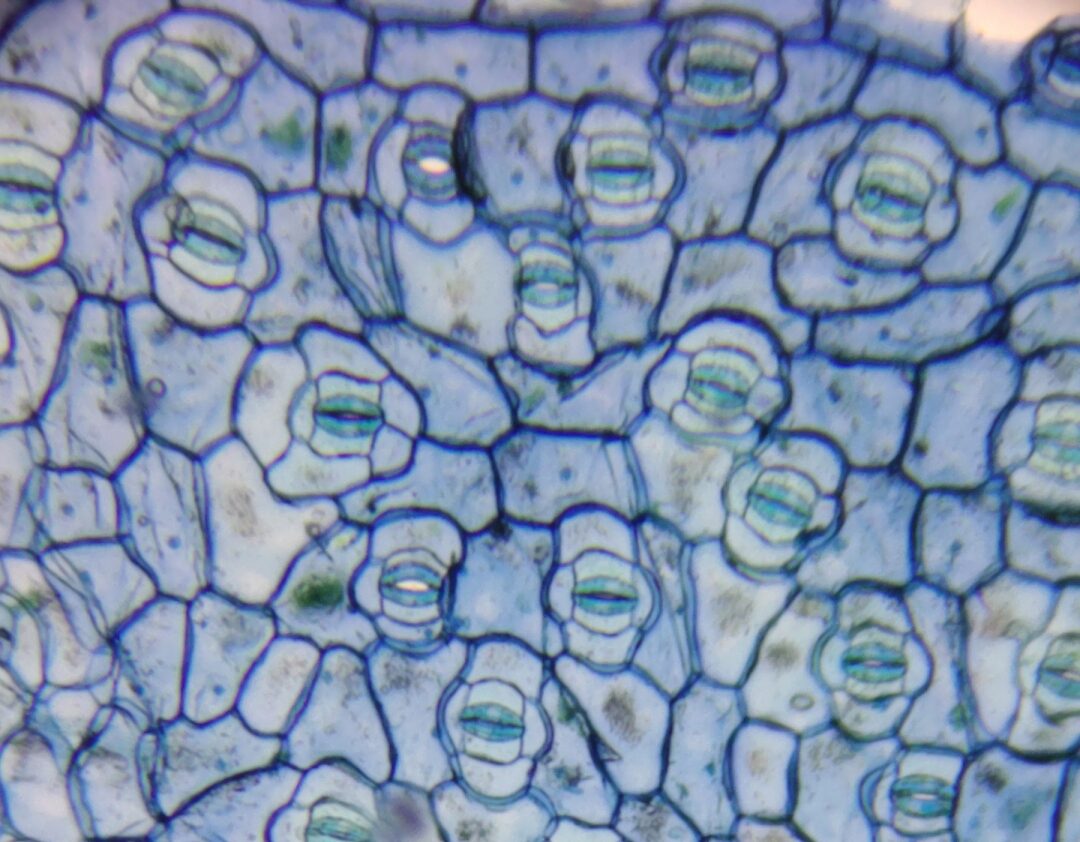Stomata on the upper (adaxial) and lower (abaxial) sides of a leaf look identical, yet their inner workings differ. A recent study shows that the combinations of potassium (K⁺) channels driving light-induced stomatal opening are not the same on the two sides. Stomata on the lower side respond strongly to light and open wider, while those on the upper side open more modestly. This likely reflects a “smart design”: avoid excessive water loss on the sun‑exposed upper surface while efficiently taking up CO₂ on the lower surface. The study connects fine-tuned plant physiology from molecules to whole-leaf behavior in a way that’s both rigorous and engaging.
- Different “valve designs” on the upper and lower sides
- How they verified it: a multi-layered approach
- Why this is rational: the water-use efficiency (WUE) perspective
- Protein shape speaks to function: AI structure prediction
- Academic impact and outlook
- Takeaways and applications: hints for smart farming and breeding
- KAT/AKT quick note
Different “valve designs” on the upper and lower sides
Stomatal opening depends on whether guard cells take up K⁺ and swell. The study indicates a division of labor during light-induced opening: KAT1-type inward K⁺ channels dominate in guard cells on the abaxial (lower) side, whereas AKT1-type channels are predominant on the adaxial (upper) side. As a result, lower-side stomata show a larger opening response to light, and upper-side stomata a more restrained one. In short, the internal “valve (channel) configuration” switches by leaf side.
(A quick KAT vs. AKT note is provided at the end.)
How they verified it: a multi-layered approach
Using model plants (Arabidopsis and tobacco), the team combined microscopy-based aperture measurements, gene expression profiling of guard cells (including single-cell analyses), genetics (overexpression and loss-of-function mutants), and ion flux measurements. Together, these approaches show that the expression ratios of K⁺ channel families differ between upper and lower guard cells, and that these differences manifest as distinct strengths of light responses—consistently across molecular, cellular, and organ scales.
Single-cell transcriptomics has truly become mainstream. As morphology and physiology dive into the microscopic world, it’s becoming a core analytical tool.
Why this is rational: the water-use efficiency (WUE) perspective
The upper leaf surface is more exposed to direct sunlight and heat; if stomata opened without restraint, water would be lost rapidly. An adaxial = AKT1‑skewed configuration helps keep light-driven opening to the necessary minimum, placing the leaf in a “water‑saving mode.” In contrast, an abaxial = KAT1‑skewed configuration allows larger apertures that promote CO₂ uptake and support photosynthesis. Modeling analyses likewise indicate that the KAT1/AKT1 ratio and total channel abundance correlate with daytime stomatal conductance (an index of the ease with which CO₂ and water vapor pass through stomata), supporting the idea that side‑specific differences help optimize gas exchange and WUE.
Protein shape speaks to function: AI structure prediction
Leveraging AI-based protein structure prediction (AlphaFold3), the authors suggest geometric differences between the pores of KAT1 and AKT1 channels. For example, variations in pore shape and diameter align with differences in K⁺ transport efficiency and electrical properties. By aligning structural hints with physiological data, the work offers a molecular-design explanation for why the lower side opens wider while the upper side remains restrained.
Academic impact and outlook
The study is novel in connecting the concept that guard cells are functionally differentiated by leaf side with evidence spanning gene expression, ion channel function, and modeling. It underscores the need to re‑examine data that historically averaged both sides of the leaf, and instead to interpret them as side‑specific design logics (adaxial vs. abaxial). Looking ahead, one can imagine tuning channel expression or upstream regulatory pathways in a side‑aware manner, depending on environmental conditions and species strategies.
Takeaways and applications: hints for smart farming and breeding
In short, the upper and lower leaf surfaces optimize “water saving” and “CO₂ capture” simultaneously by using different mixes of K⁺ channels. Where might this be useful?
For example,
Breeding for improved water‑use efficiency (WUE) under drought
Optimizing light, humidity, airflow, and leaf-surface management in greenhouses and vertical farms
Developing productivity‑enhancing strategies that target stomatal responses via chemical or biological stimuli
Altogether, the key terms are “stomata,” “adaxial/abaxial leaf sides,” “potassium channels,” “KAT1,” “AKT1,” “light response,” and “water‑use efficiency.” Understanding this literal two‑sidedness of leaves could directly inform next‑generation smart agriculture and sustainable crop production.
KAT/AKT quick note
- Official names:
- KAT = K⁺ channel in Arabidopsis thaliana
- AKT = Arabidopsis K⁺ transporter
- Common ground: Shaker‑type inward K⁺ channels. K⁺ influx → guard‑cell turgor ↑ → stomatal opening.
- Main differences: KAT (especially KAT1) drives strong light‑induced opening. AKT1 is essential for root K⁺ uptake under low‑K and contributes to more restrained opening in guard cells. AKT2 is linked to phloem/long‑distance transport and electrical signaling.
- Side‑specific usage:
- Lower (abaxial) = KAT‑skewed → larger opening
- Upper (adaxial) = AKT1‑skewed → water‑saving



コメント